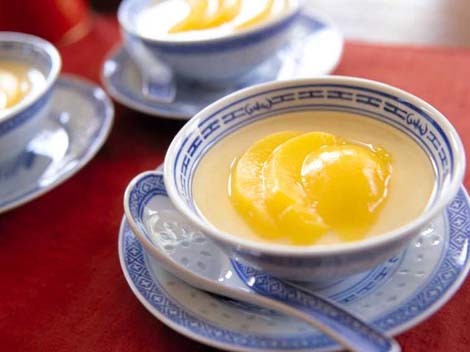Posted 2017/6/27

Cuisine refers to a dish system possessing distinctive flavors and features in a certain region. China is a time-honored multi-ethnics nation with a vast territory and abundant resources, and every ethnic group has its unique abundant dishes. Regional cuisines have taken shape after long-history evolution under the influence of geographical environment, climate, products, cultural tradition, folk customs and other factors. The most influential and representative ones are Lu, Chuan, Yue, Min, Su, Zhe, Xiang and Hui Cuisines, which are commonly known as “Eight Major Cuisines”.
Lu Cuisine refers to Shangdong dishes, featuring dense taste and favor of shallot and garlic, especially apt at the cooking of seafood, soup and a variety of bowels. Famous flavored dishes include Dezhou braised boneless chicken, braised intestines in brown sauce, and braised Yellow River carp with sweet and sour taste.
Sichuan Cuisine refers to Sichuan dishes, and it is famous for diversified, vast and dense taste. Dishes with the greatest reputation include fish fragrant shredded pork, Ma Po peppery beancurd, and noodles with peppery sauce.
Yue Cuisine is Guangdong-style cooking, featuring fry, deep fry, braise and pot-roast, etc., with special clear, light, crisp and fresh taste. Famous dishes include roast suckling pig, fried greasy-back shrimp, oyster sauce beef, and Guangdong-flavored moon cake.

Min Cuisine refers to Fujian dishes, with choice seafood as main raw materials, featuring the combined flavor of sweetness, sourness and saltiness as well as beautiful color and fresh taste. The most famous flavored dishes include steamed abalone with shark’s fin and fish maw in broth, fish ball, Fuzhou thin noodles, and pad and fried oyster.
Huaiyang Cuisine is a style of cooking prevalent in the middle and lower reaches of the Yangtze River, famous for pot-roast, stew and simmer, featuring soup regulation and fumet preservation. Representative dishes include stir-fried eel, white gourd bowl, steamed bun stuffed with three sorts of diced meat, and steamed dumpling with meat fillings.
Zhe Cuisine is Zhejiang style of cooking, featuring freshness, tenderness, mellow fragrance, cleanness and non-oiliness. Famous dishes include Longjing stir-fried shrimp, West Lake water shield soup, Jiaxing steamed glutinous rice, Ningbo glutinous rice balls, and Huzhou multi-layer steamed bun.
Xiang Cuisine is Hunan style of cooking, featuring fragrant-peppery, hot-peppery, sour, spicy, burnt-hot, and fragrant-fresh taste, with sour-spicy taste as the most favorite flavor. Famous dishes include Dong’an chicken, Zu’an shark’s fin, and lotus seedpod with crystal sugar.
Hui Cuisine is Anhui style of cooking, featuring common usage of ham to diversify taste and crystal sugar to increase freshness, apt at roasting and pot-roast, with heat control being attached with importance. Famous flavored dishes include stewed hen with stone fungus, smoked pork, mung bean battercake and farfalle noodles.
Dishes in the “Eight Major Cuisines” in China are characterized by diversified cooking skills, with each having its strong points. These styles of cooking are once personated in the following way: Su and Zhe Cuisines are comely and plain beauties in the south regions of the Yangtze River; Lu and Hui Cuisines are guileless and sincere men in North China; Yue and Min Cuisines are dissolute and elegant childes; Chuan and Xiang Cuisine are personages with abundant cultivation and acqierement. Being prevalent across China, the “Eight Major Cuisines” have been adding rich flavors into people’s diet, which also reflect the important role of diet in the Chinese life.